New releases from Kaged Supplements are always exciting, particularly when it's a new protein powder.
After all, Kaged Supplements – formerly Kaged Muscle – cut their teeth on premium protein. Although they've since branched out, they're still industry leaders for whey, casein, and even plant-based protein supplements.
Kaged's 2018 release of Micropure Whey Protein Isolate was an industry event. Micropure established Kaged's bona fides, proving Kaged is among the cream of the crop when it comes to pure, tasty, and clean protein supplements.
Introducing Kaged Protein Isolate Elite at GNC
Now Kaged is taking another stab with Protein Isolate Elite, which comes alongside the Kaged Pre-Workout Elite and Hydration Elite product launches at GNC on August 31, 2023.
Protein Isolate Elite represents the industry's new standard for supplemental protein. That's because it's not exactly a whey supplement – it's actually a carefully calibrated blend of whey, casein, and milk protein (which is whey + casein before separation). By using a combination of different milk protein fractions, Protein Isolate Elite can help you build muscle better than either whey or casein alone.
Combining whey and casein is the natural evolution for Kaged protein supplements – Kaged came out with Kaged Kasein, then Micropure, and now we're getting a supplement with both proteins in the same serving.
Although this is a simple change of concept, it's exciting for consumers and the industry as a whole. We'll talk about why combining proteins is a great idea, and how it works to help you build as much muscle as humanly possible, but first, let's check the PricePlow news and deals for Kaged Supplements:
Kaged Protein Isolate Elite Series – Deals and Price Drop Alerts
Get Price Alerts
No spam, no scams.
Disclosure: PricePlow relies on pricing from stores with which we have a business relationship. We work hard to keep pricing current, but you may find a better offer.
Posts are sponsored in part by the retailers and/or brands listed on this page.
This area is reserved for Team PricePlow's upcoming videos.
Subscribe to our channel and sign up for notifications so you catch it when it goes live!
Hit Your Macro Targets with Kaged Protein Isolate Elite
There's a ton of research (discussed at the bottom of this post) explaining why a high-protein diet is so important. But it's tough to eat meat non-stop. That's where protein supplements like Kaged Protein Isolate Elite come in.
Since 77% of the calories in Kaged Protein Isolate Elite come from its 25 grams of protein per serving, using this product can make hitting your target macronutrient split a lot easier – especially when you're restricting your caloric intake for the sake of dropping fat.
Losing Fat Is Easier With The Thermic Effect of Protein
Another benefit of the high-protein diet is that the thermic effect of food is much higher for protein than it is for carbohydrates or fat.[1] By thermic effect, we're referring to the amount of energy your body expends digesting your food – protein is harder for your body to break down, so you end up burning more calories the more protein you eat.
In other words your net caloric intake is lower when you eat more protein. Research has shown that when study participants eat isocaloric diets with varying macronutrient composition, people who eat more protein actually have a slightly higher resting metabolic rate (RMR) than those eating less protein.[2]
Protein Makes You Feel Full
Another study found that people who got 30% of their calories from protein spontaneously ate 441 fewer calories every day, compared to a control group.[3] Since a pound of body fat contains about 3,500 calories, this means you could theoretically lose almost a pound of body fat per week by eating this way – without having to consciously measure your food intake or restrict calories.
Your mileage may vary, but if losing fat and building muscle is your goal, increasing protein consumption is almost certainly going to help you get what you want.
Ingredients
In a single 1 scoop (35 gram) serving of Protein Isolate Elite from Kaged Supplements, you get the following:
-
ioWhey Protein Isolate – 15 grams
Whey protein is the industry's most popular form of protein , and there are good reasons for that.
First, the specific amino acids that make up whey are extremely bioavailable,[4] which means that your body actually digests and utilizes a huge percentage of the whey you ingest. Contrast this with plant-sourced protein, which typically has poor bioavailability, and mostly passes through your body without being digested or used to build muscle.[5]
Whey is also highly insulinogenic,[6] meaning it stimulates insulin secretion to a greater extent than most other forms of protein. Although insulin signaling is typically something that we try to minimize when optimizing health and longevity, insulin can be a good thing in the context of recovery from exercise, helping to increase muscle protein synthesis[7] by helping your body use dietary protein.
Paradoxically, while whey does stimulate the secretion of insulin to a large degree, whey supplementation still increases insulin sensitivity (i.e., decreases insulin resistance) thanks to its impact on your body's antioxidant capacity.[8] This is thanks to whey's high concentration of cysteine,precursor to glutathione, your body's master antioxidant.[9]
Whey also contains lots of essential amino acids – these are the amino acids that your body can't make on its own and must obtain in their complete form from external sources.[10]
Research on has repeatedly shown that whey supplementation can speed up strength and muscle gains.[10-13]
Why ioWhey?
One thing we love about Kaged Protein Isolate Elite is that Kaged has opted for the use of ioWhey, a form of whey with even higher bioavailability than generic whey.
In an absorption contest against generic whey (the control group in this graph), ioWhey won by a wide margin. The study found that ioWhey (marked WPI + io) increases plasma amino acid levels much more efficiently than standard whey protein isolate.[14]
Research on ioWhey shows that more effectively increases serum amino acid levels than generic whey.[14,15] No surprise, then, that it also seems to do better at increasing strength and muscle gains.[14,15]
You can read more about ioWhey in our post "Supercharged Protein: How Ingredient Optimized (io) Improves Protein Powder".
-
Organic Micellar Casein Isolate – 5 grams
In addition to whey, we also have micellar casein isolate in Kaged Protein Isolate Elite. Together, whey and casein make up the two groups of proteins in mammal milk.[16]
Although it's traditional for supplement companies to sell protein supplements consisting of either whey or casein, in recent years we've seen an industry trend towards combining whey and casein in the same product. The reason for this is that taking these two proteins together is actually more effective than taking either one alone.
One study from 2016 randomized rats to receive either whey, casein, or milk protein supplementation after exercise. The researchers then measured how fast the rats in each group created new muscle protein, and calculated the total impact that each protein supplement had on muscle protein synthesis.[17]
They found that the milk protein group – which got a combination of casein and whey – built muscle faster than the whey-only or casein-only groups.[17]
Whey is fast, casein is slow, but what brings more muscle protein synthesis overall when looking at the total area under the curve in rats?! It was the milk protein blend.[17]
Why whey+casein works better
Whey and casein each cause muscle synthesis to peak at different times after ingestion.[17] Whereas whey acts fast for rapid recovery after exercise, casein's effects last longer and prolong the anabolic response compared to whey.[17] This means that taking both gives you the best of both worlds: an anabolic response that starts quickly and lasts for a while.
Human research has reached similar conclusions. For example, one 2006 study found that whey+casein added more muscle than either whey alone or casein alone during a 10-week resistance training program.[18]
Whey and casein also activate different anabolic factors. For example, while whey is highly insulinogenic, casein causes your body to secrete more insulin-like growth factor (IGF-1).[19] These two hormones are anabolic in different ways, and may complement each other in a synergistic fashion, for a more powerful anabolic response.[20]
-
Milk Protein Isolate – 5 grams
As we were saying earlier, milk protein isolate is basically just the combination of whey and casein, before they are separated. The use of all three protein fractions – whey, casein, and milk protein isolate – probably means that Kaged is trying to achieve a specific whey-to-casein ratio.
The whey-to-casein ratio of human milk is 60:40, while for animal milk it's about 20:80.[21] This means the whey-heavy composition of Kaged Protein Isolate brings it more in line with the milk protein fraction that human beings evolved to digest.
-
MAX Catalyst (Piper nigrum Fruit Extract) (95% Piperine) – 2 mg
Coming to GNC through Spring 2024, Kaged Pre-Workout Elite Series is an updated spin on Pre-Kaged Elite that comes in both stimulant and stimulant-free options!
In our Kaged Elite Pre-Workout article, we discussed Kaged's use of MAX Catalyst, a new ingredient absorption technology based on black pepper extract. It's back in Kaged Protein Isolate Elite to help with amino acid absorption too:
Piperine is an alkaloid, naturally occurring in black pepper, that can help increase the absorption of other nutrients. By inhibiting enzymes that ordinarily degrade nutrients in your stomach, piperine enables those nutrients to transit your stomach and reach your intestines intact, where they can be absorbed into your bloodstream in their whole, active form.[22]
When you see piperine used in a premium supplement like Kaged Protein Isolate Elite, the main reason is that the formulator is trying to maximize the value you get for your dollar, by increasing your body's absorption of the nutrients in the supplement.
However, piperine has some other benefits too. It can help improve glycemic control by activating glucose transporter 4, which can lower postprandial blood glucose.[23]
Piperine has also been shown to improve liver function in mice,[24] and has antioxidant effects.[25]
-
Cocoa Powder (Processed with Alkali)
Although it's not a major part of Kaged Protein Isolate Elite, cocoa powder can have some great health benefits, even in small amounts. That's because it's high in epicatechin and other polyphenol antioxidants,[26] which have been shown to improve inflammation, circulation, blood pressure, cholesterol, and glycemic control[26] among other things.
The main reason why cocoa's antioxidants are so healthy is their nitric oxide boosting effect.[27,28]
-
Medium Chain Triglyceride Powder
Medium-chain triglycerides (MCTs) are so called thanks to their medium carbon chain length – they consist of 6 to 12 carbon atoms.[29-32]
Your liver converts MCTs into ketones,[33] which your body can then use for clean-burning energy that won't affect your blood glucose or insulin levels. MCT consumption has been shown to increase RMR, speed up fat loss, support brain health, and suppress appetite.[29-31]
-
Organic Agave Inulin
Inulin is a prebiotic fiber that can help improve microbiome health.[34,35] It's called a prebiotic because it's a food source for probiotic bacteria, which obviously helps that good bacteria proliferate and improve your gastrointestinal health.
The gram of fiber on Kaged Protein Isolate Elite's supplement facts label comes from the inulin. Like other dietary fibers, inulin has been shown to help improve blood glucose dynamics.[36]
Granted, the amount of inulin present here is small, but a little can go a long way.
-
Calcium – 327 mg (25% DV)
A good amount of calcium occurs naturally in milk protein fractions.
We've all heard about the importance of calcium for healthy bones – fewer of us know that the body's calcium requirement increases as we get older.[37] This is especially problematic when you consider the fact that, on average, Americans also eat less calcium as we age.[38]
Even young people don't get as much calcium as they should – the average intake for young adults is 1,000 milligrams, which is 200 milligrams short of the recommended 1,200 milligrams per day.[37]
One thing to remember when calculating your own calcium intake is that plant-based sources of calcium exhibit lower bioavailability than animal sources.[39] That's why we prefer to get calcium from dairy-based supplements like Kaged Protein Isolate Elite.
-
Other Ingredients
Kaged Protein Isolate Elite is sweetened with sucralose and steviol glycosides (stevia), and has salt to complement the rest of its flavor system.
It uses a gum blend of both xanthan gum, guar gum and carrageenan, which are supported by sunflower lecithin for dispersion. In our experience, using more than one gum is the whey to go (har har), especially for whey-heavy products like Kaged Protein Isolate Elite.
All Protein Isolate Elite Flavors
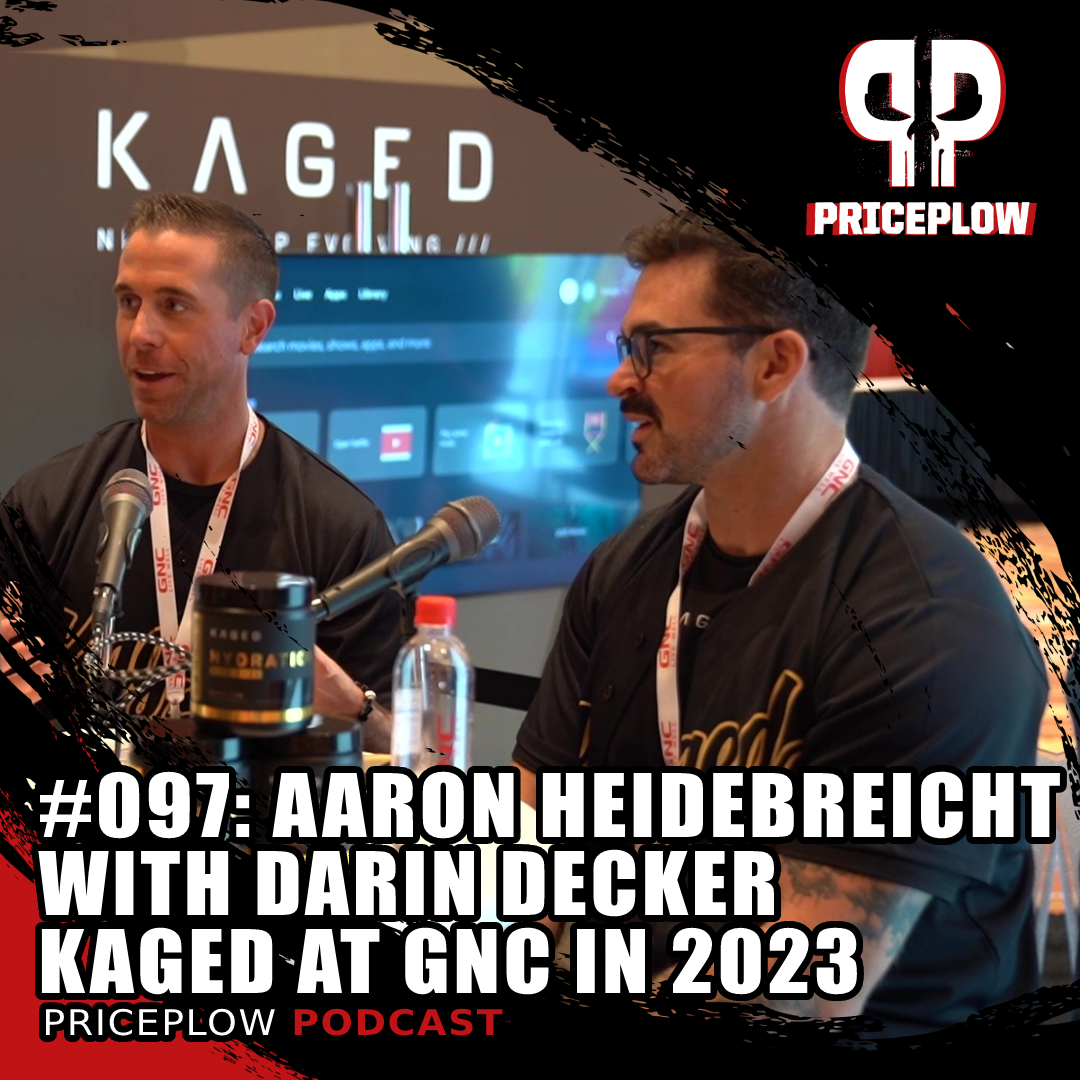
Aaron Heidebreicht and Darin Decker of Kaged join the PricePlow Podcast from the 2023 GNC Franchise Convention for Episode #097 to discuss major partnership updates, which includes an enormous launch at GNC!
Why Eat A High-Protein Diet?
Advanced supplement consumers, athletes, and bodybuilders are probably familiar with the metabolic arguments in favor of eating more protein. Anyone who hits the gym has probably been spotted at some point with a protein shaker bottle in their hands as they exit the gym.
But if you're a supplement newbie, you might be wondering: what's the big deal? Why is everybody so obsessed with maximizing their protein intake? The short, and perhaps obvious answer, is that the amount of muscle your body builds in response to exercise is determined largely by your dietary protein intake.[40]
The question is just how much protein do we need to maximize the anabolic response? How much is optimal?
The latest research shows that gains on additional protein consumption begin to fall off around the 0.75 grams per pound of body weight per day mark.[41] If we set up a double 95% confidence interval around that number – meaning we add two standard deviations of daily protein intake, just to ensure we're not missing out on any muscle growth – the number goes up to 0.82 grams per pound of body weight per day.[42]

Energy and/or dietary protein restriction induce net muscle catabolism, releasing amino acids for energy production, gluconeogenesis, and synthesis of peptide hormones, plasma proteins, immune system components, and enzymes (representative examples, not an exhaustive list; not drawn to scale). AA, amino acids; ADH, antidiuretic hormone; hGH, human growth hormone; T3, triiodothyronine; T4, thyroxine.[40]
Something to note about both these numbers – 0.75 and 0.82 grams/lb/day – is that they're both much higher than the 0.36 grams/lb/day protein recommended daily protein allowance (RDA) currently set by the USDA.[43] That's because the RDA is calibrated for sedentary people whose metabolic goal is not to add new muscle, but only to prevent muscular atrophy. So the RDA is not intended as a guide for athletes, bodybuilders, or even just someone who's unusually active in their daily life.
If your goal is to build as much muscle as possible and recover from intense exercise as efficiently as possible, you'll need to consume roughly twice as much protein as the USDA's RDA.
The idea that protein requirements scale with activity level is supported by research. One peer-reviewed study from 2016, authored by Dr. Guoyao Wu of Texas A&M, spells it out for us:
"Based on short-term nitrogen balance studies, the Recommended Dietary Allowance of protein for a healthy adult with minimal physical activity is currently 0.8 g protein per kg body weight (BW) per day. To meet the functional needs such as promoting skeletal-muscle protein accretion and physical strength, dietary intake of 1.0, 1.3, and 1.6 g protein per kg BW per day is recommended for individuals with minimal, moderate, and intense physical activity, respectively."[44]
The upper bound recommended here, 1.6 grams per kg per day, works out to about 0.72 grams per pound of body weight per day. Very much in line with the optimal protein intake we discussed above.

See PricePlow.com/kaged to save on Kaged Supplements!
The average American adult eats about 88 grams of protein per day, which, using our model based on the double 95% confidence interval, would be enough for an athlete weighing only 107 pounds. Let's face it – most athletes (especially male athletes) don't weigh 107 pounds.
A sedentary person, on the other hand, could get away with 88 grams per day, and avoid muscular atrophy, if they weighed 244 pounds.
That should be a nice illustration of how increased physical activity can drastically increase the amount of protein you need to stay healthy.
If you're a 175 pound man doing the standard three day split – say, push-pull-legs – with cardio on the days in between, you're probably going to do a lot better eating 0.75 to 0.82 grams per pound of bodyweight per day. That means you'll need somewhere between 131 and 144 grams of protein per day to optimize your muscle growth and recovery from exercise.
This gets even more complicated if you're going through cutting and bulking cycles, because cutting makes fitting all that protein into your diet a lot more difficult – in nature,protein typically comes bundled with significant amounts of carbs and fat, so if you eat enough protein from just whole foods, it can be difficult to stay under your maximum caloric intake.
Conclusion
Kaged Protein Isolate Elite is a solid entry in the next-generation protein supplement category. It's basically your standard whey protein, updated in two key ways:
- The use of ioWhey, which we love and seems on track to become the new industry standard whey source.
- The blend of whey and casein, as opposed to only one of these, for optimal muscle protein synthesis.
Kaged Protein Isolate Elite will definitely get the job done, and is a great deal at its current price point.
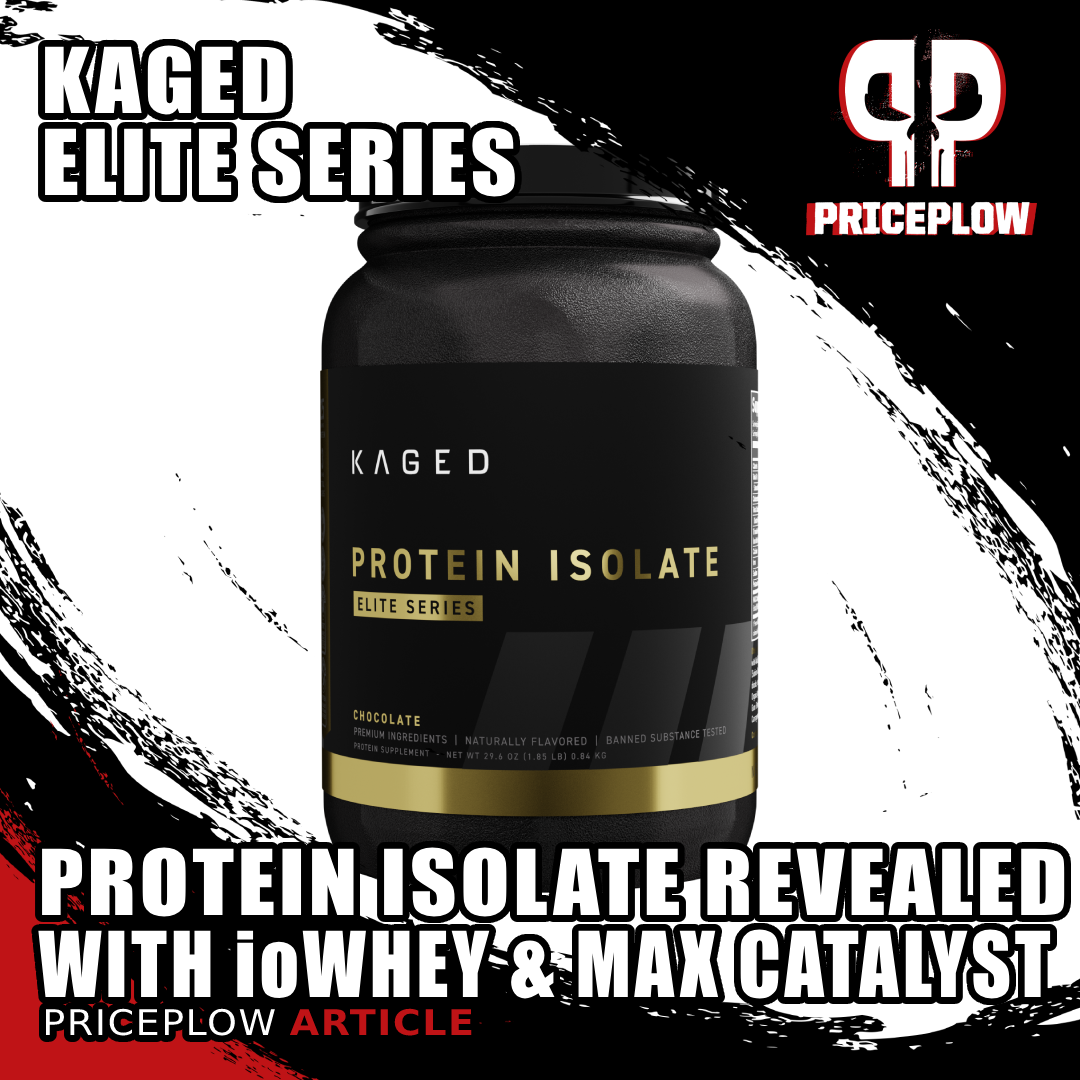
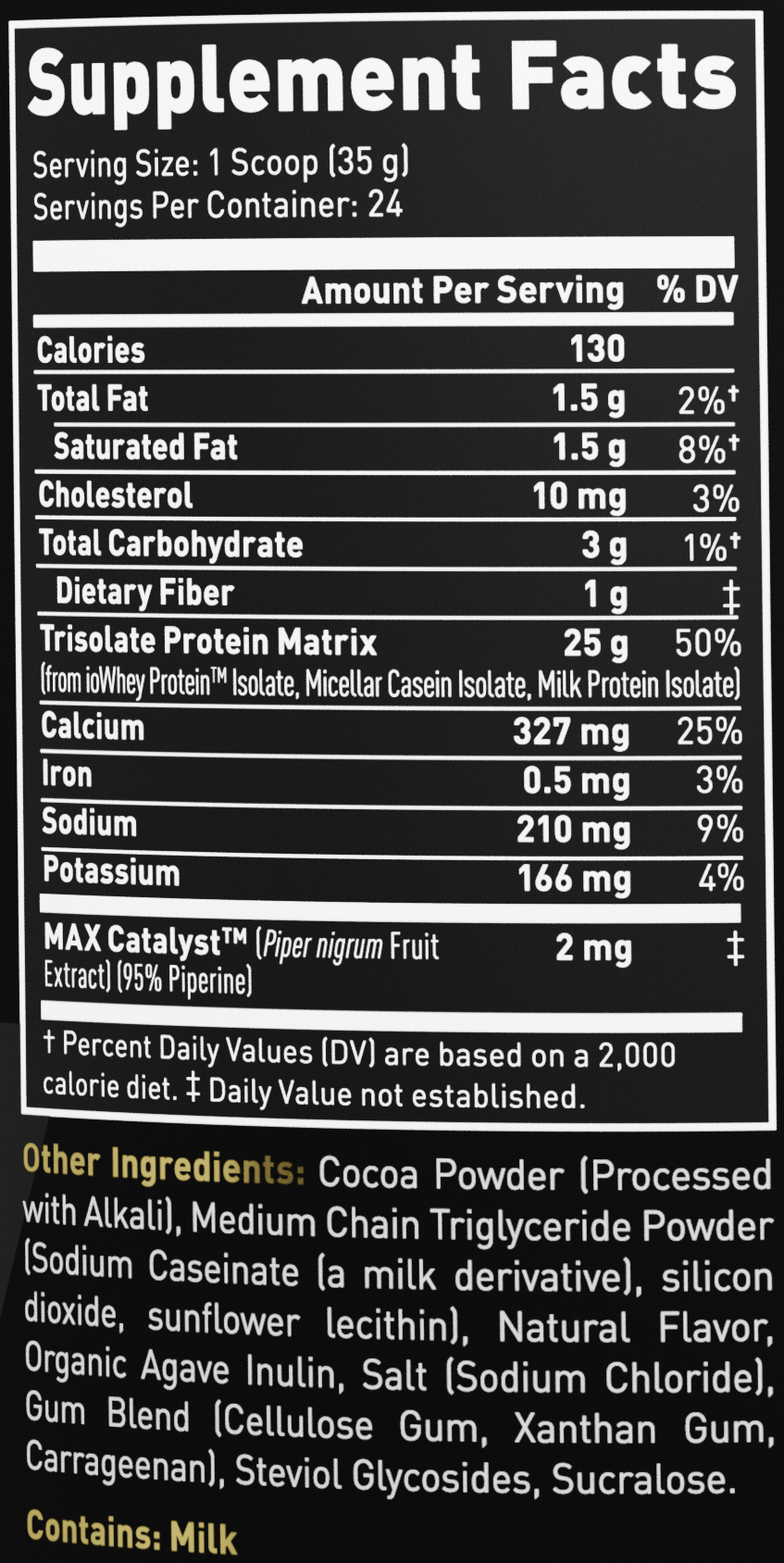
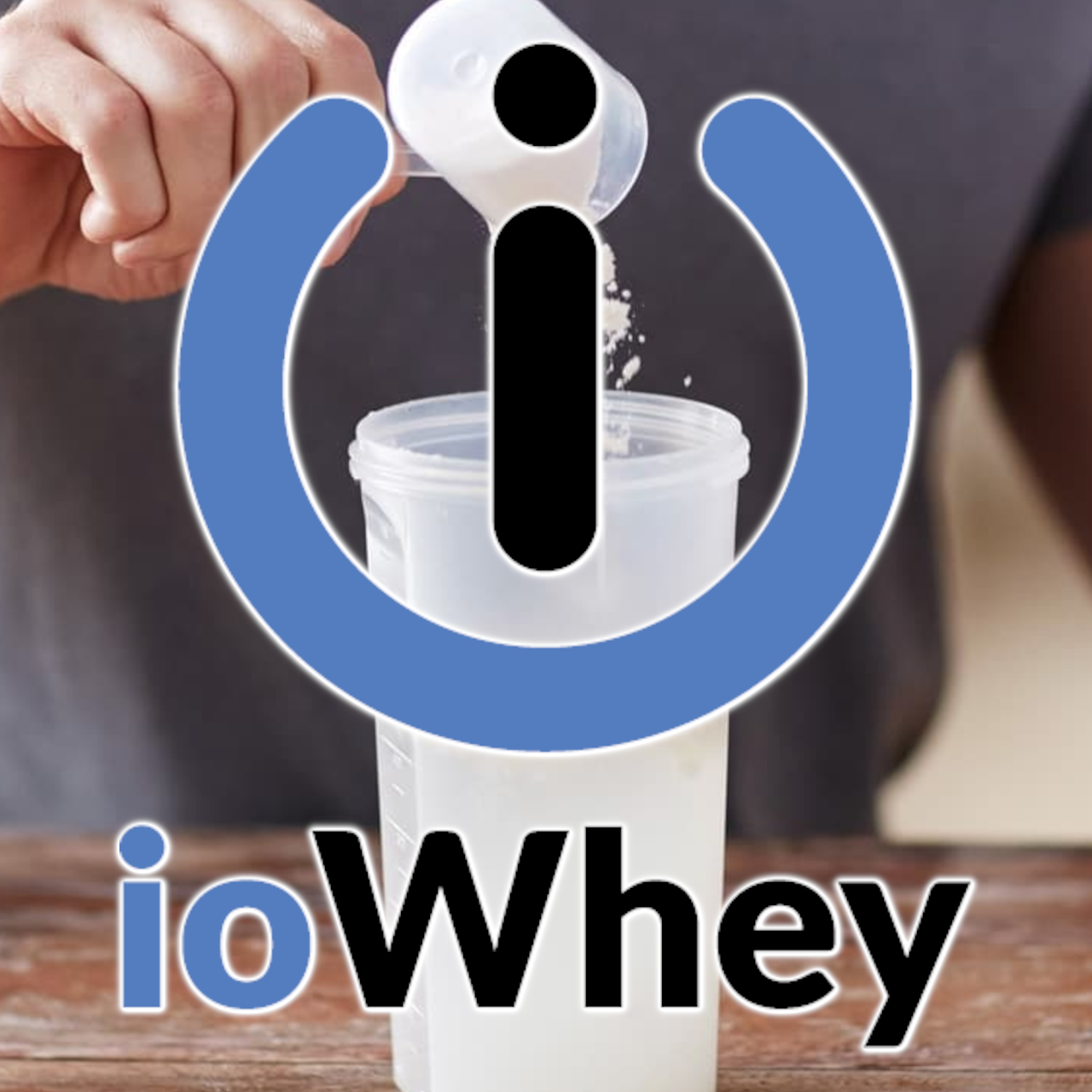

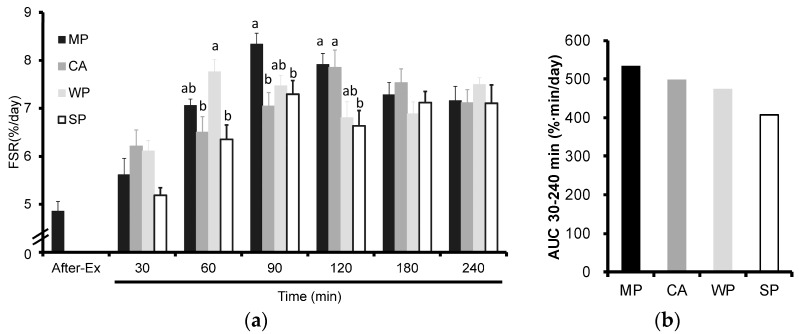
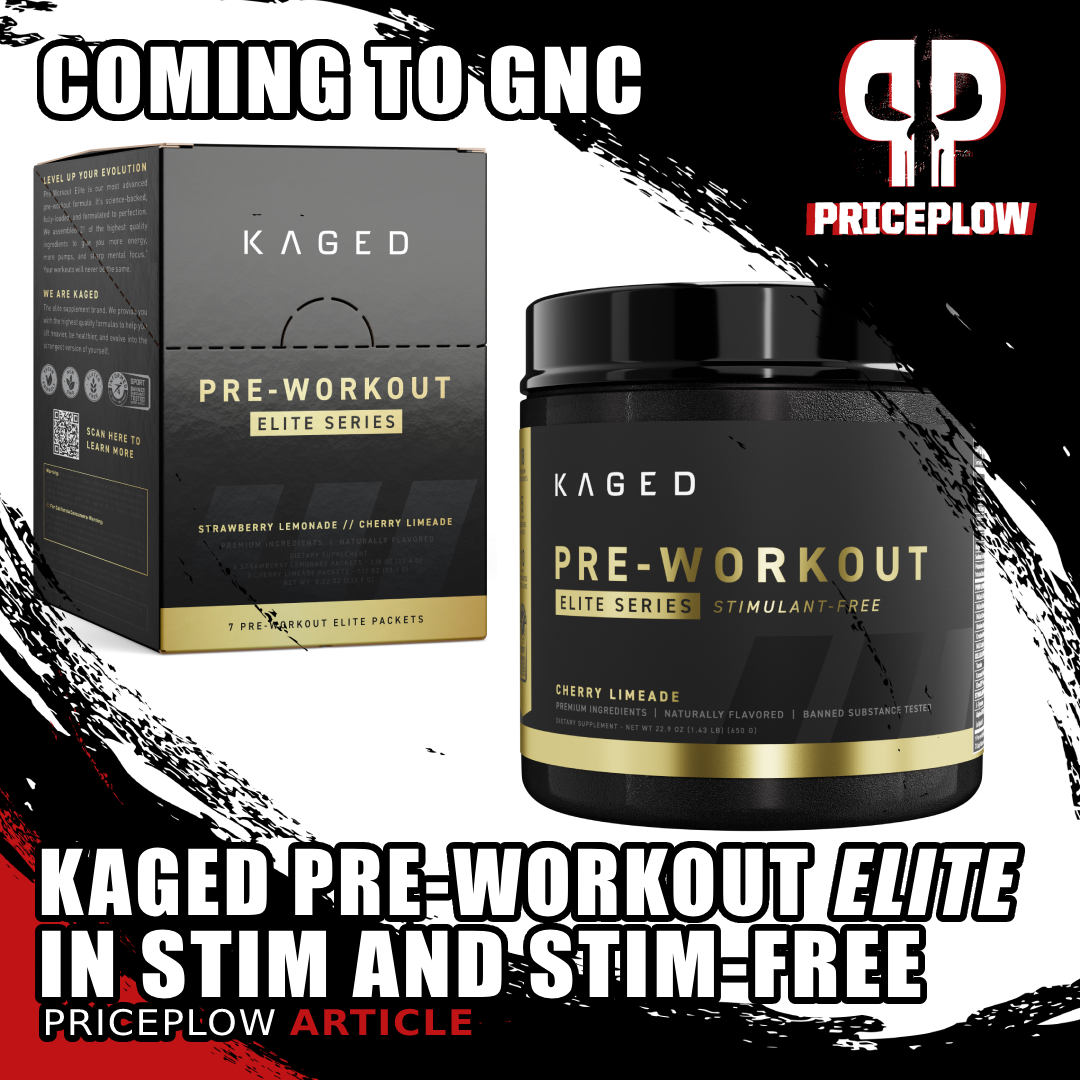

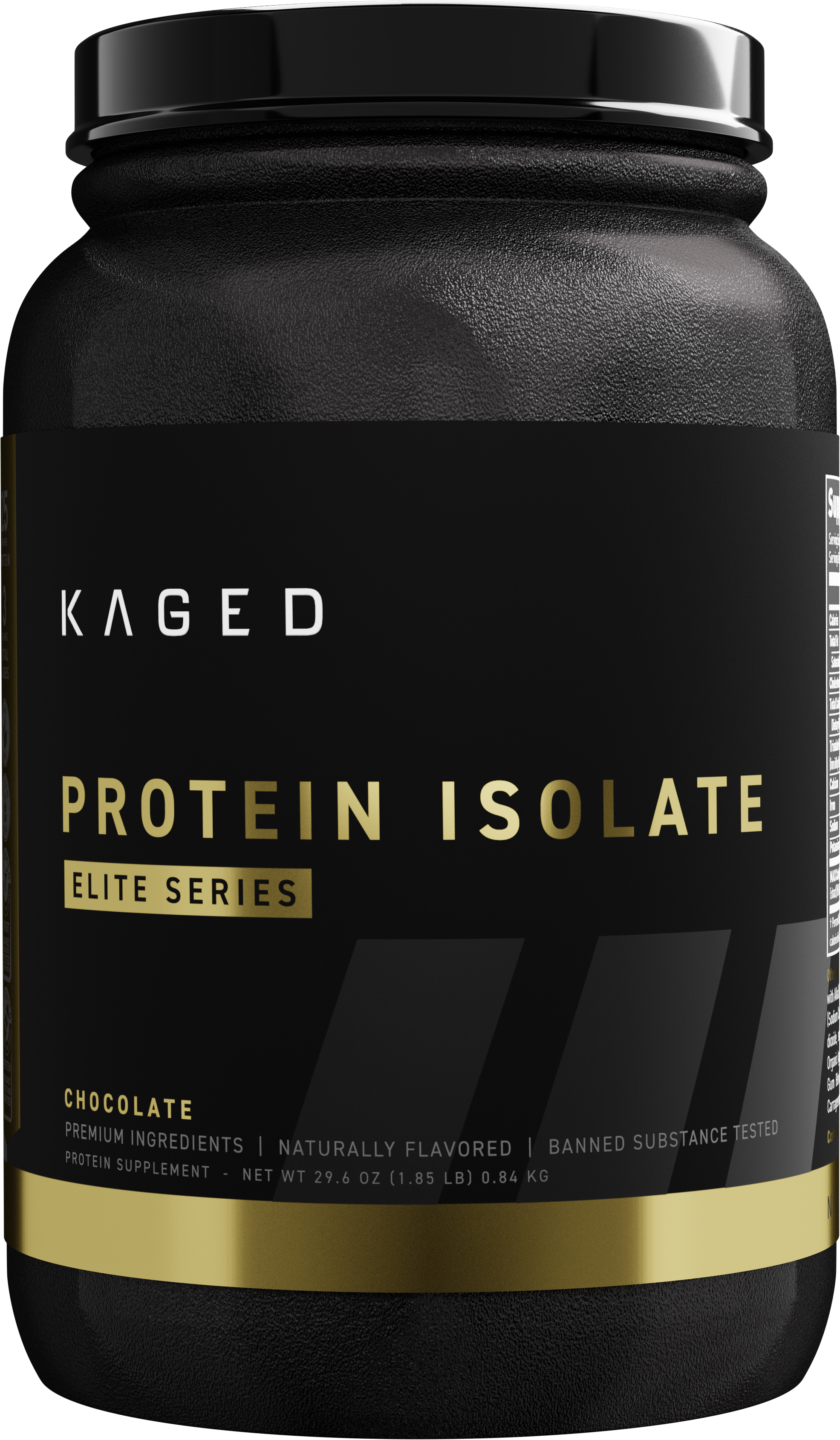
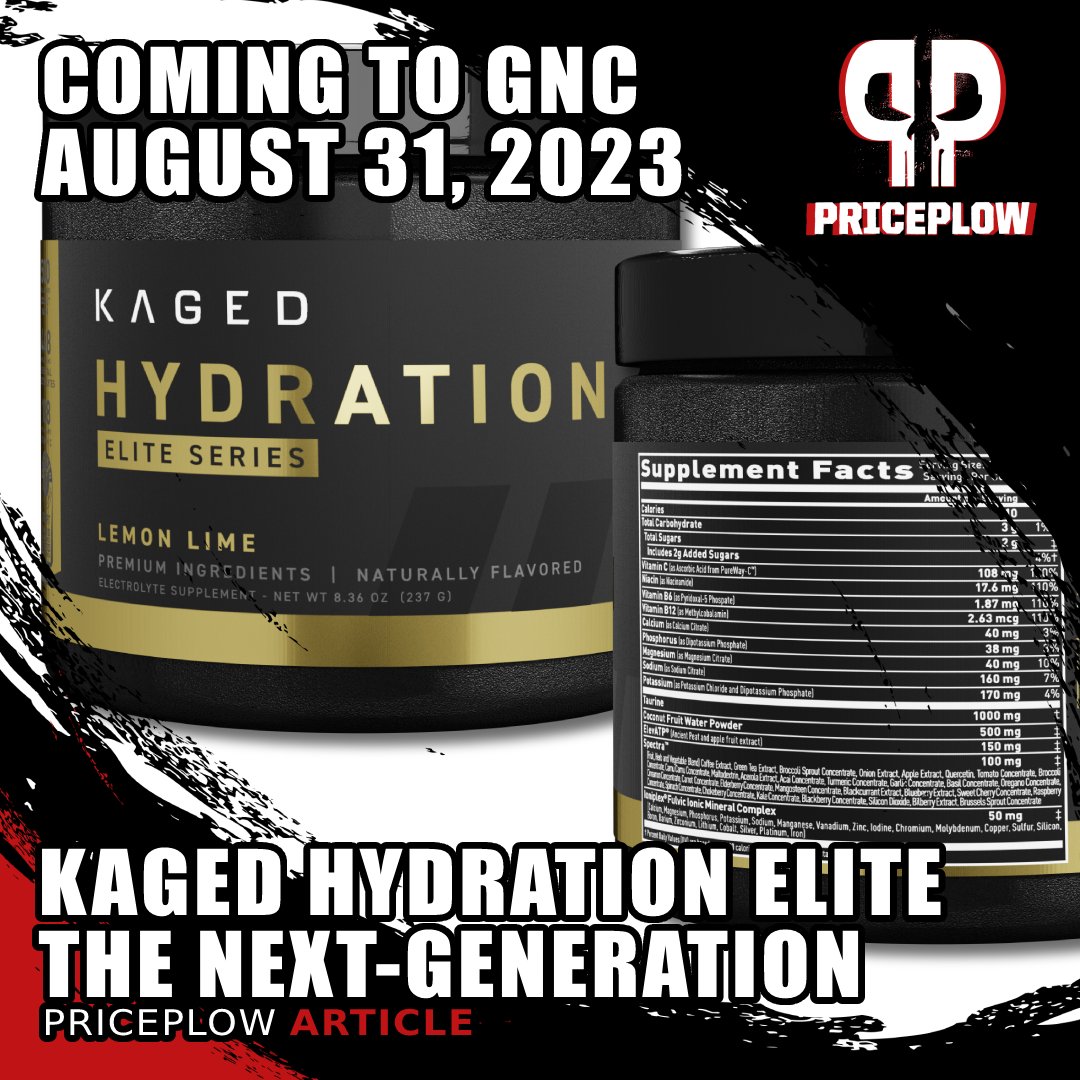


Comments and Discussion (Powered by the PricePlow Forum)